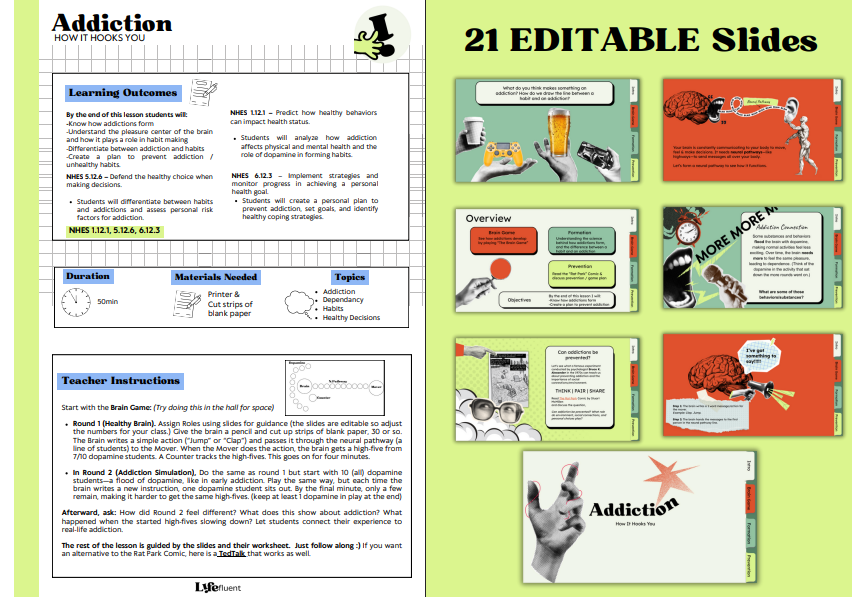

Most health lessons on addiction focus on defining addiction, explaining how it develops in the brain, and highlighting its negative impact on people’s lives. Which… is a good start but leaves most teens thinking, “That will never happen to me.”
But what if, in your health or psychology class, you could get your students to not only see how addiction works—but actually experience it in action?
With this simulation lesson, students take on roles like the brain, dopamine, the reward system, and neural pathways. First, they act out a healthy habit-forming brain. Then, through a fun and eye-opening game, they’ll quickly find themselves caught in an addiction spiral that starts to feel out of control.
It’s a powerful, hands-on way to help students grasp the science behind addiction while also exploring the factors that contribute to it. By the end, they’ll walk away with strategies for making life choices that prevent addiction before it starts. This is an empowering lesson students won’t forget.
Want to see exactly how to set up this simulation? Check out this LifeFluent video!
Included:
-The Dopamine Chase Simulation
-21 Editable Google slides
-2 page worksheet
-Videos with lesson
-Discussion questions (THINK | PAIR | SHARE)
This lesson is best for grades 7-12 and can take anywhere from 60-90 min depending on how long you choose to let the discussions go.
Something went wrong, please try again later.
This resource hasn't been reviewed yet
To ensure quality for our reviews, only customers who have purchased this resource can review it
to let us know if it violates our terms and conditions.
Our customer service team will review your report and will be in touch.